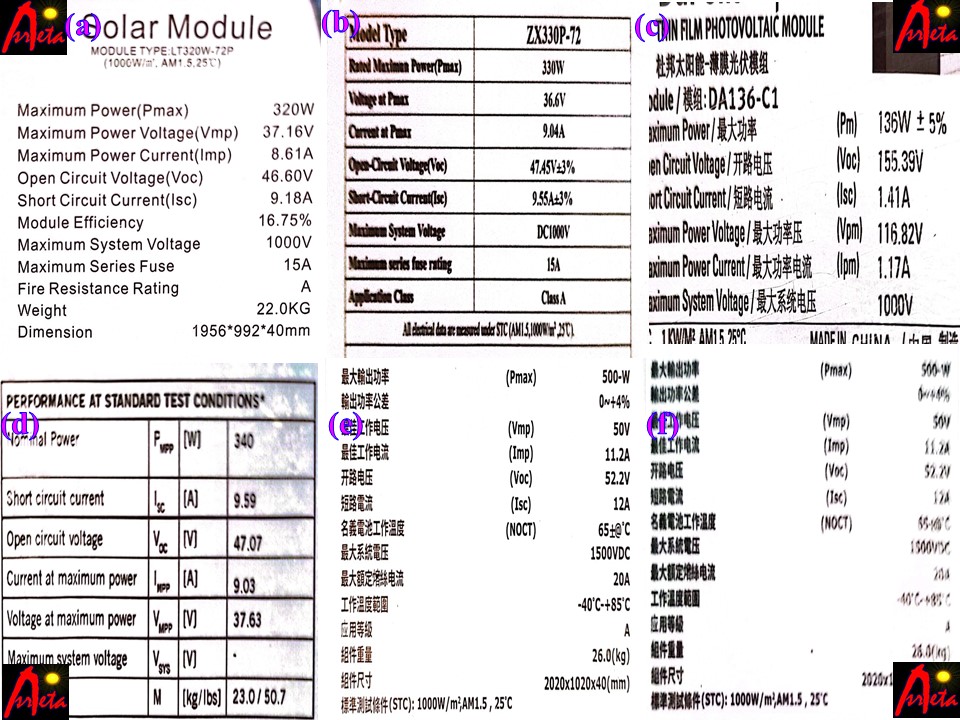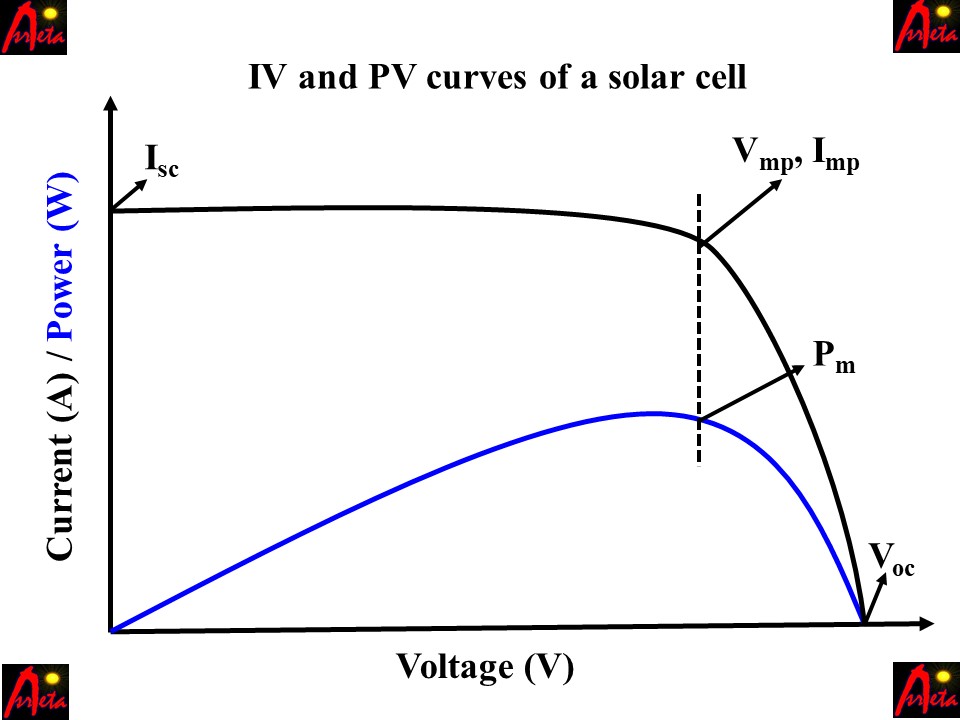Your Guide to Solar Panel Specifications
A solar panel is a combination of many solar cells connected in series or parallel to attain specific voltage and current levels because the output of a single solar cell in not very sufficient. Solar panels are commercially available and they come in different sizes and shapes. The way to technically differentiate solar panels is through their power outputs. Typical solar panel specification table can be found at the back of a solar panel and figure 1 gives some examples of these specifications table. Now I will explain these specifications one by one in some detail so that everyone could easily understand these things.

Solar Panel Specifications
Maximum Power (Pmax, or Pm)
The maximum power is the rated power output of a solar panel. This is the power that vendors tell you before you buy your panel. It is usually the first thing written in the solar panel specification table. We can correlate this term with a PV curve of a single solar cell which is shown in figure 2. The blue curve shows a point where maximum power is achieved. It is the same with solar panels. The solar system which you are trying to install contains a specific number of panels. If you are installing panels with higher power output, you will require less number of panels. In figure 1, the panel (a) is giving 320 W power output, whereas, panel (e) is giving 500 W of power output. The maximum power output from single panels can be as high as 500-600 W today.
For example, if you are installing a 10 kW system (which is equal to 10,000 W), you will require 20 panels of 500 W or 25 panels of 400 W.

Maximum Power Voltage (Vmp, or Vm)
This factor represents the voltage that a solar panel produces at its maximum power point. If we consider figure 1(a), the panel is giving a voltage of 37.16 V at its maximum power point.
Maximum Power Current (Imp, or Im)
This factor represents the current that a solar panel produces at its maximum power point. If we consider figure 1(a), the panel is giving a current of 8.61 A at its maximum power point. These two factors of maximum power voltage and maximum power current, when multiplied give maximum power output of a solar panel.
For panel given in figure 1(a), the Pmax would also be a multiple of Vmp and Imp (37.16 x 8.61), which comes out to be 319.9476 W, which is approximately equal to 320 W.
Open-circuit Voltage (Voc)
The open-circuit voltage factor represents the voltage that a solar panel produces at maximum load. This factor can be measured by connecting a voltmeter to the terminals of the solar panel when it is connected to a load (connection in parallel). This voltage is not the point at which panel is operated because it will yield low power, but the panel’s voltage can reach this value in some instant of operation. Therefore, when designing the strings of panels (making arrays of panels), this voltage is considered rather than maximum power voltage.
Short-circuit Current (Isc)
The short-circuit current factor represents the current that a solar panel produces at when its terminals are connected. This factor can be measured by connecting an ammeter to the terminals of the solar panel (connection in series). This current is not the point at which panel is operated because it will yield low power, but the panel’s current can reach this value in some instant of operation. Therefore, when designing the strings of panels (making arrays of panels), this current is considered rather than maximum power current.
Maximum System Voltage
Solar panels are usually connected in series to make arrays. In series connection, voltages of solar panels add up, but the current passing through them remains the same. The maximum system voltage factors represents the upper limit voltages that can be added up, which means there is a limit to the number of panels that can be connected in series in an array.
For example, in figure 1(a), the panel’s maximum system voltage is 1000 V and its open-circuit voltage is 46.60 V, therefore, only 21 such panels can be connected in series in a string (making total voltage 978.6 V). Any further addition of such panels in series will surpass 1000 V, which would be dangerous for solar installation.
Module Efficiency
This factor gives the efficiency of the solar cell. The current crystalline silicon solar cells efficiency can be between 16-22 %.
Dimensions
This factor specifies the size of the solar panel. It is usually represented in length x width x thickness.
These are the major solar panel specifications found at the back of the solar panel. Other solar panel specifications that we can come across often are listed below.
Temperature Coefficient
This factor represents the loss of efficiency when temperature of the solar panel increases from standard temperature of 25 °C. A temperature coefficient of 0.4%/°C would mean that the efficiency of solar panel decreases by 0.4% every time the temperature of solar panel increases by 1°C after 25°C.
Further Reading
If you liked this post, you might be interested in reading the following posts.
- Solar cells, their construction, and working
- From solar cells to solar panels to photovoltaic (PV) system
- Shading on solar panels and its types
- The function of Bypass diodes in increasing power output
- Components of a solar PV system
